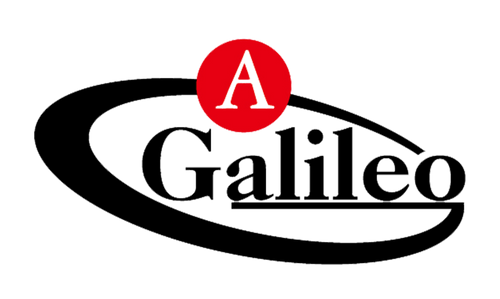Unveiling the "Violent" Side of Golf: Galileo sports’s Personal Perspective

As a major brand that has been deeply involved in the golf category for decades, Galileo sports will go to decipher the underlying logic.
We often hear beginners say: "Golf looks easy and there is not much exercise." In fact, this is not the case. Golf can be said to be a very "violent" sport. I don’t know if you agree with this view?
Why do you say that?
Just imagine: a small ball is placed on the ground, and a person holds a club in his hand. Without moving his body and feet, he uses his whole body to hit the small ball very far. How much energy does this require the body to produce?

Typically, the swing speed of an amateur male golfer's driver is around 90 miles per hour, generating a ball speed exceeding 130 miles per hour. The energy produced by the body is quite substantial, simultaneously exerting significant pressure on various joints. During the downswing, the rotational force generated by the body is eight times the golfer's body weight. If a golfer weighs 80 kilograms, this results in a force of 640 kilograms during the downswing. Just imagine the magnitude of force pressing on the body—there's nothing "light" about it.
The Physicality of Golf
Athletic Attributes in Golf
Golf requires a unique set of athletic attributes. It's not just about finesse; it's about strength, agility, and endurance. The misconception that golfers are merely strolling on the course is quickly dispelled when you feel the burn in your muscles after a rigorous round.
Swing Dynamics
The Forceful Nature of the Swing
The golf swing is the beating heart of the game, and it's where the "violence" becomes most apparent. Early in my journey, I struggled to grasp the force required for a powerful swing. It was only through relentless practice and understanding the biomechanics that I could unlock the true potential of my swing.

Mental and Emotional Aspects
The Psychological Intensity
Golf is a battleground of the mind. As I faced the challenges of competitive play, I realized that the psychological intensity is as vital as the physical aspect. The pressure to perform, the mental calculations before each shot—it's a mental chess game that adds a layer of complexity to the sport.
Training and Conditioning
The Importance of Fitness
To navigate the "violence" in golf, physical fitness is non-negotiable. My journey took a turn when I incorporated a fitness regimen tailored for golfers. Strengthening core muscles, improving flexibility, and building endurance became crucial elements of my training routine.
"Violent" golf causes various injuries
According to relevant statistics, the most common areas for sports injuries among amateur golfers are concentrated in the lower back, elbows, and wrists. It's noteworthy that among professional golfers, lower back injuries account for 63% of reported injuries. Why are other parts of a professional golfer's body less prone to injury? The answer is quite simple – it's because professional golfers have both the physical fitness and swing techniques well-prepared. This allows them to participate in competitions weekly while minimizing the risk of sports injuries as much as possible.
Causes of golf injuries
1.Limited physical ability is the main reason
It's a common sight to see amateur golfers attempting to mimic the swing movements of professional players. However, most amateurs may not possess the same level of physical ability as their professional counterparts, such as the separation of the upper and lower body or the flexibility of the shoulders. Each sport places specific demands on the body, and if these requirements aren't met, injuries can easily occur. These physical limitations can lead golfers to develop incorrect swing characteristics, and repeating these flawed movements over the years may result in overuse injuries in certain joints.

In the golf swing, each joint has its unique role. Some joints contribute to flexibility, while others are responsible for maintaining stability. Moreover, the movement of one joint can influence the motion of others. If a particular joint encounters an issue, it can potentially impact the activity of other joints.
For instance, if a golfer lacks sufficient flexibility in the thoracic spine, meaning there's limited separation between the upper and lower body, the golfer might compensate by using the lumbar spine, a joint that requires stability. In this scenario, the golfer may employ a tilting motion instead of a rotating one during the backswing, putting significant pressure on the lower back and resulting in an incorrect swing.

In today's golf landscape, professional players increasingly prioritize physical conditioning. The demands of extended practice sessions and competitive play necessitate maintaining optimal athletic conditions to avoid sports-related injuries. Systematic physical training can offer numerous benefits to golfers, including helping them establish a solid power sequence, enhancing swing efficiency, and mitigating the risk of sports-related injuries.
Embracing a well-structured fitness regimen can significantly contribute to a golfer's overall performance and longevity in the sport. It goes beyond just perfecting the swing—it's about nurturing the body to meet the specific demands of golf, preventing injuries, and ensuring a golfer's ability to perform at their best, both on the practice range and during crucial moments on the course.
2.Unreasonable swing technique
Most people think golf is very simple, just walking and swinging, and the swing is also very simple. However, most beginners have many problems with their golf swings. The main problem in the golf swing is insufficient trunk rotation and excessive exertion of the upper limbs, resulting in excessive scapula activity and increased load on the serratus anterior muscle, leading to injuries. Improper swing movements can increase the load on certain parts of the body and cause injuries.
Start and end:
It is located on the side of the chest wall, originating from the lateral surface of ribs 1-9, running closely behind the chest wall, and ending at the medial edge of the scapula and the lower corner of the scapula.
Function:
(1) Extend the scapula forward, working together with the upper and lower trapezius muscles to produce upper rotation motion;
(2) Keep the inner edge of the scapula close to the chest wall; (3) Lift the ribs to assist in deep inhalation.
Related research:
The serratus anterior muscle remains at a high level of activity throughout the golf swing and is therefore prone to fatigue.
Clinical manifestations of serratus anterior injury:
In mild cases, there is soreness in the shoulder and back of the affected side, pain when lifting the shoulder, and the inner edge of the scapula is raised, especially when pushing the wall with both hands;
In severe cases, the pain in the shoulder and back of the affected side is obvious, it is difficult to lift the shoulder and the pain gets worse, the inner edge of the scapula is obviously raised, the pain gets worse when changing positions from lying down, and the pain is obvious when taking a deep breath. Think golf is very simple, just walking and swinging, and the swing is also very simple. However, most beginners have many problems with their golf swings. The main problem in the golf swing is insufficient trunk rotation and excessive exertion of the upper limbs, resulting in excessive scapula activity and increased load on the serratus anterior muscle, leading to injuries. Improper swing movements can increase the load on certain parts of the body and cause injuries.

3.Unreasonable training arrangements
Practicing seven times a week, essentially every day, for 4-5 hours each session, hitting 400-500 balls each time, and sustaining this intensive practice routine for three consecutive months. The frequency and intensity of the practice regimen are excessively high, leading to the occurrence of overuse injuries.
4.No preparatory activities
As soon as you get to the driving range, you take out your clubs and start practicing with just a few simple moves. When resting, do not pay attention to keeping warm. After a long break, I didn’t do preparatory activities again when I practiced ball again. Not doing preparatory activities or taking a long rest will make the effects of preparatory activities disappear and the muscles will not be able to enter working condition. If you start practicing ball before your muscles are in working condition, it is easy for injuries to occur.
5.Not paying attention to fatigue recovery
After practicing, I put the clubs in my golf bag and drove home. If fatigue cannot be eliminated in time and gradually accumulates, muscle function will weaken. If you continue to practice, injury will easily occur.

The "Violent" Side of Golf:Last word
In conclusion, golf's "violent" nature isn't something to shy away from but rather to embrace. From the physical demands of the swing to the mental fortitude required, each element contributes to the unique character of the sport. Galileo is committed to delivering golf knowledge to everyone who understands galileo sports and escorts everyone who loves golf.So, the next time you step onto the course, remember that behind the calm exterior lies a game of power, precision, and a touch of controlled "violence."
0 commentaire

























































